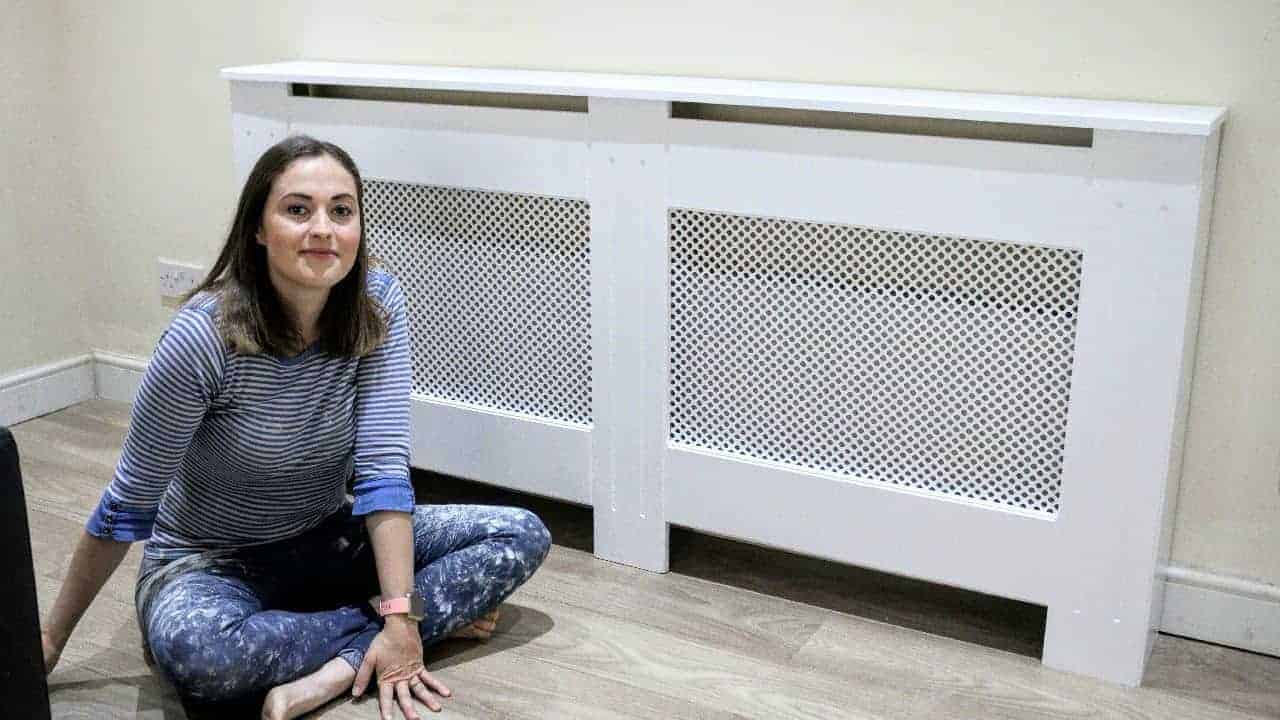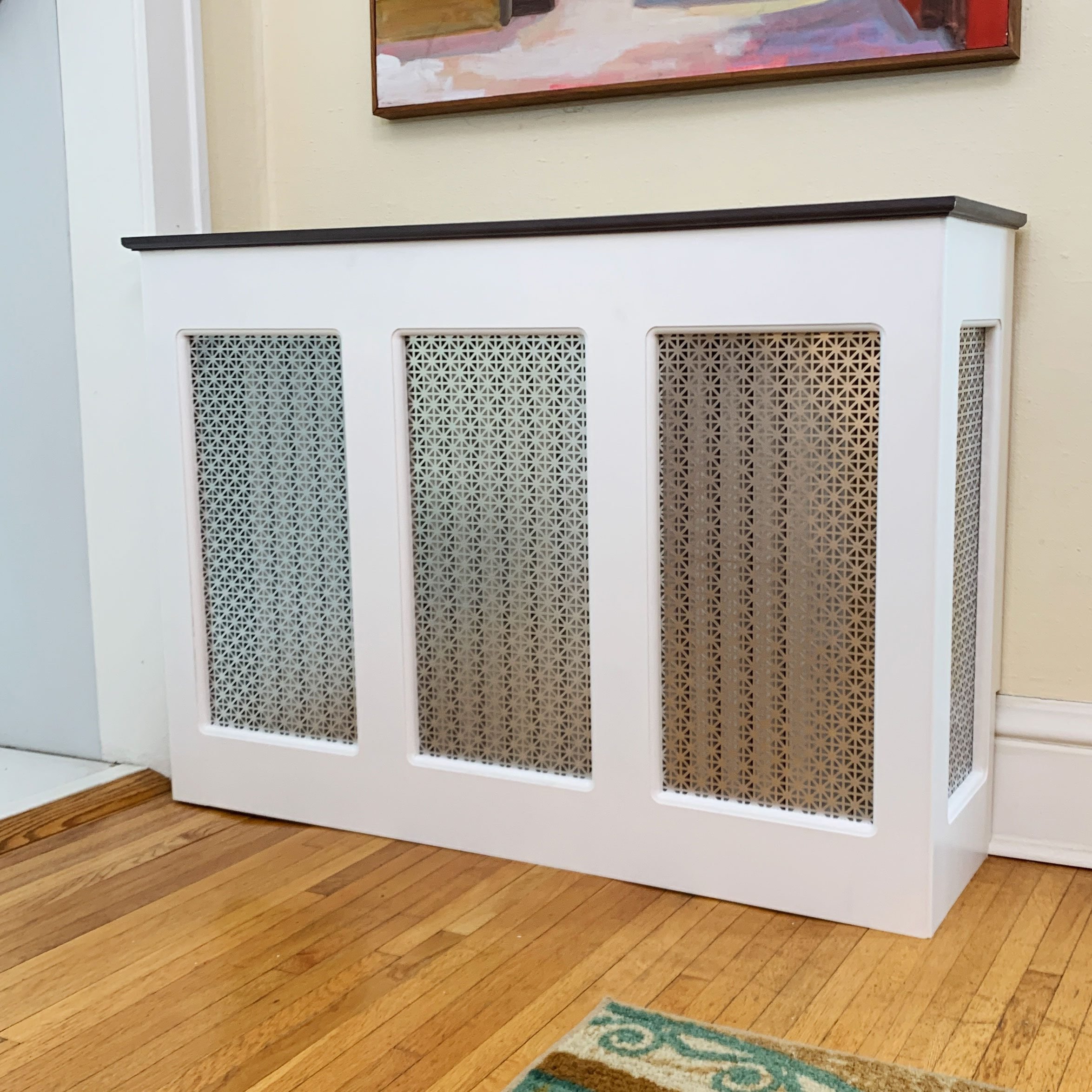Radiator Covers: Recognizing Materials, Styles, and Advantages
Radiator covers serve both aesthetic and practical purposes within a home, supplying an array of materials such as steel, wood, and mdf to suit numerous design preferences. Selecting the right radiator cover entails comprehending the nuances of products, layouts, and their linked benefits.
Sorts Of Materials


Wooden covers, usually crafted from hardwoods such as oak or maple, provide a classic, cozy look that enhances traditional interiors. Their longevity and capability to be tarnished or painted contribute to their flexibility. Metal covers, generally made from steel or light weight aluminum, are favored for their robustness and modern appearance, commonly including sleek lines that enhance modern rooms.
MDF, a produced timber item, is prominent for its cost-effectiveness and convenience of personalization. It can be repainted or finished to match existing design while supplying a smooth surface area. Plastic covers, while much less usual, are immune and light-weight to dampness, making them ideal for moist settings.
Eventually, the choice of material for a radiator cover must align with the home owner's style choices, functional needs, and the details atmosphere where the cover will certainly be set up. Each product supplies a distinct personality, making certain that there is an alternative to fit every taste and setup.
Popular Style Styles
Emphasizing visual charm, preferred layout styles for radiator covers reflect a variety of tastes and indoor layout fads. Conventional layouts frequently include detailed woodwork and luxuriant outlining, making them ideal for vintage-inspired or traditional insides. These covers generally incorporate sculpted elements, offering a cozy and inviting feel to any type of space.
In contrast, contemporary designs concentrate on minimalist aesthetic appeals, identified by clean lines and underrated style. Materials such as metal or sleek timber with a smooth finish are frequently made use of, permitting these covers to mix perfectly into modern rooms. Industrial styles, on the other hand, embrace raw products like revealed steel and concrete, including a vibrant declaration to loft or metropolitan settings.
For those seeking an one-of-a-kind touch, bespoke designs offer modification alternatives that deal with private preferences, enabling home owners to select colors, patterns, and materials that complement their decor. Additionally, farmhouse-style covers integrate rustic components, featuring distressed wood and straightforward types that evoke a comfortable, country beauty.
Benefits of Radiator Covers
Radiator covers not only improve the visual charm of a space but likewise offer a number of practical benefits that make them a worthwhile addition to any home. Among the primary benefits is safety, specifically in homes with youngsters or family pets. Covers minimize the risk of burns from hot radiator surfaces, guaranteeing a much safer setting.
Furthermore, radiator covers can improve power effectiveness. By directing warmth right into the area instead of allowing it to leave, they help keep a regular temperature level, lowering home heating costs with time. This is particularly helpful in older homes where radiator systems might be less effective.
An additional notable advantage is noise decrease. Radiators can sometimes produce unwanted audios throughout procedure, and covers can help smother these noises, adding to an extra relaxed home. Furthermore, radiator covers can be functional, giving added storage or display screen room, consequently taking full advantage of the utility of often-overlooked locations.
Last but not least, they can safeguard radiators from dirt and debris, which can impede efficiency and rise maintenance demands. With these integrated advantages, radiator covers emerge as a practical solution for enhancing both the performance and style of any home atmosphere.
Installment Considerations
Setting up radiator covers needs mindful consideration to make certain both performance and safety and security (Radiator cover). Evaluate the measurements of your radiator and the read the full info here surrounding area to make sure a proper fit. Precise measurements are vital; an ill-fitting cover can obstruct warm circulation or produce safety threats
Next, review the material of the cover. While timber uses aesthetic appeal, steel options may supply better toughness and heat resistance. Consider the weight of the cover too; heavier covers might need extra support or reinforcements to prevent drooping or damages with time.
Air flow is an additional essential aspect. Covers have to include sufficient air movement to protect against getting too hot and maintain reliable heating. Try to find styles with slats or perforations that permit warmth to distribute without blockage.
In addition, ensure that the cover is securely installed to protect against accidents, specifically in homes with pets or children. Radiator cover. It's a good idea to adhere to the producer's setup guidelines carefully and, if required, get in touch with a professional for complex installments
Upkeep and Care Tips
Correct maintenance of radiator covers is essential for guaranteeing their durability and optimum performance. For repainted or wood covers, think about a suitable polish or protective finish to preserve their look.
Check the covers periodically for indications of wear or damages, such as cracks or peeling paint. Resolving these problems promptly can stop further wear and tear. Guarantee that the covers are firmly fastened and look for any kind of loosened screws or installations, as resonances from the radiator can loosen them gradually.
In cooler months, stay clear of placing hefty items or attractive items in addition to the radiator covers, as this can hinder warmth distribution and create unnecessary anxiety to the structure. Take into consideration seasonal maintenance by eliminating the covers for complete useful reference cleaning and inspection during warmer months when the heating system is non-active. Adopting these basic care pointers will enhance the performance and visual charm of your radiator covers, guaranteeing they serve their function efficiently for years ahead.

Conclusion
In recap, radiator covers act as visual and useful improvements to property areas. The varied series of products, including hardwoods, steel, MDF, and plastic, allows for alignment with different style styles such as standard, modern, commercial, and farmhouse. The advantages of these covers expand past safety and power performance to consist of extra storage and dust security. Cautious factor to consider of setup and maintenance further makes sure the long life and effectiveness of radiator covers in any type of home atmosphere.
Radiator covers serve both visual and useful purposes within a home, supplying a range of products such as steel, hardwood, and mdf to suit different layout preferences. Picking the ideal radiator cover includes recognizing the subtleties of materials, designs, and their connected advantages.Highlighting visual this post charm, prominent style styles for radiator covers mirror an array of tastes and indoor layout trends.Radiator covers not only improve the visual allure of an area but likewise use numerous functional advantages that make them a worthwhile addition to any kind of home. Consider the weight of the cover as well; larger covers may require added support or reinforcements to prevent sagging or damage over time.